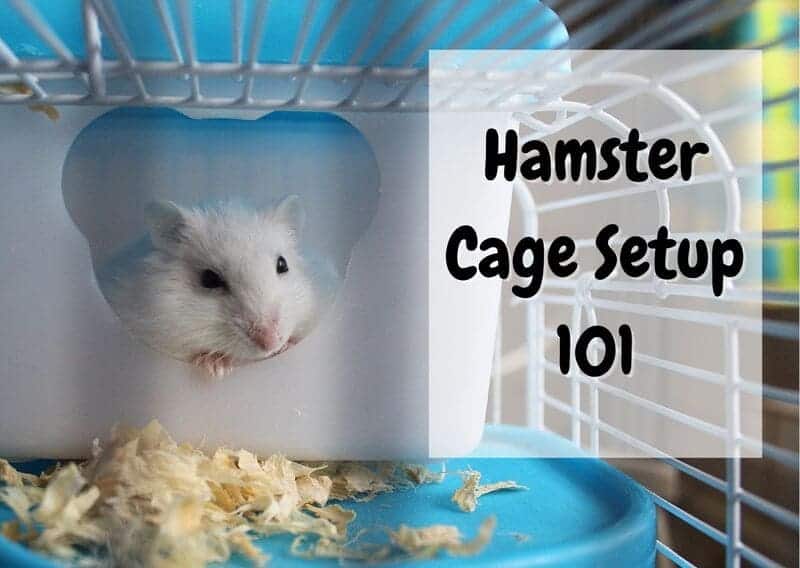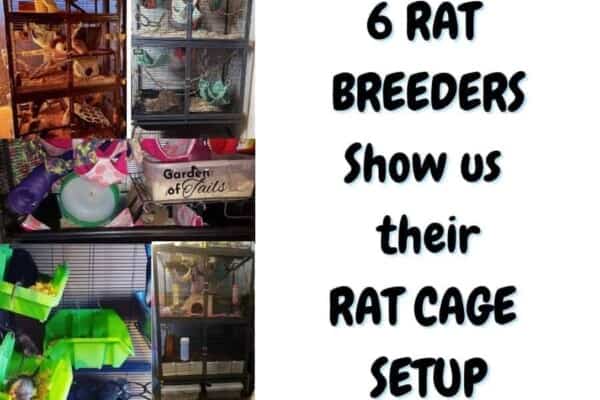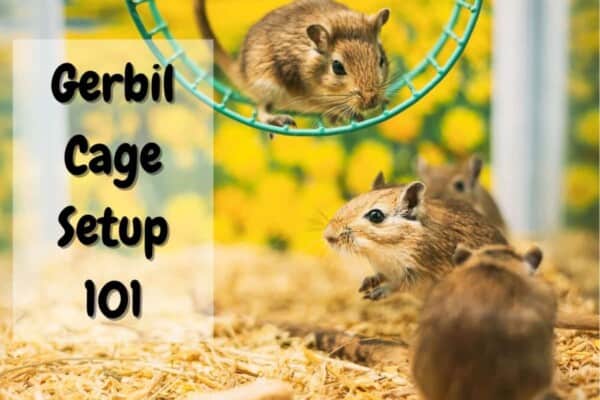Given that hamsters are very active critters, a good cage setup is essential to keep them happy and entertained.
In this guide, we will cover what you need to think about when setting up your hamster cage, from the type of cage you should choose, the accessories inside the cage, and the kind of toys you can provide for them. In the end, you will know how to create the perfect habitat for your hamster to be happy and healthy.
What Type Of Cage Should I Use For My Hamster?
Starting with the choice of the cage itself, look out for these four factors when picking up a cage for your hamster:
- Cage type and dimensions
- Bar spacing
- Platforms inside the cage
- The material the cage is made of
1. Cage type and dimensions
To determine how big your hamster cage should be, you need to consider the size of your hamster first. Ultimately they branch off into four different categories for sizes:
- The Syrian hamster which is the larger in this group can grow to be 6-7 inches long;
- The Chinese hamster will reach 3.5 to 5 inches when fully mature;
- The dwarf Campbell’s Russian hamster which is 4 inches long;
- The dwarf winter white Russian hamster is 3.5 to 4 inches long;
- The dwarf Roborovski hamster only grows to be 2 inches long at best.
As you can see, they all have a range of sizes that will determine cage size. Since Syrian and some Chinese hamsters need to be housed in their habitat as a single pet, the ideal cage size should be a minimum of 450 square inches – roughly 30 inches by 15 inches with at least 2 square feet of living space. Some owners might choose a fish tank, but the best habitat is always a cage so there is plenty of air flowing to them.
Dwarf hamsters are smaller but they are not going to be so happy living alone. They will sometimes prefer to be in pairs inside their habitat so give each hamster an extra 450 square inches since they tend to be territorial anyhow.
You will need cage upgrades if you have a pregnant hamster. This is so you can give the female the larger cage by herself and keep the male in the smaller cage. If you don’t, the male might try to eat the newborn babies.
2. Material
One of the materials you want to avoid putting in your cage is plastic. Hamsters like to chew stuff and if anything is made of plastic they will chew on it. This is why a good cage should be made from metal.
If there are any accessories inside the cage, these need to be made from ceramic or wood. Even their running wheel should be made mostly from metal parts, or a material that won’t be harmful if they do nibble on it. If they are chewing these materials, it’s time to remove them for something more durable.
3. Bar spacing
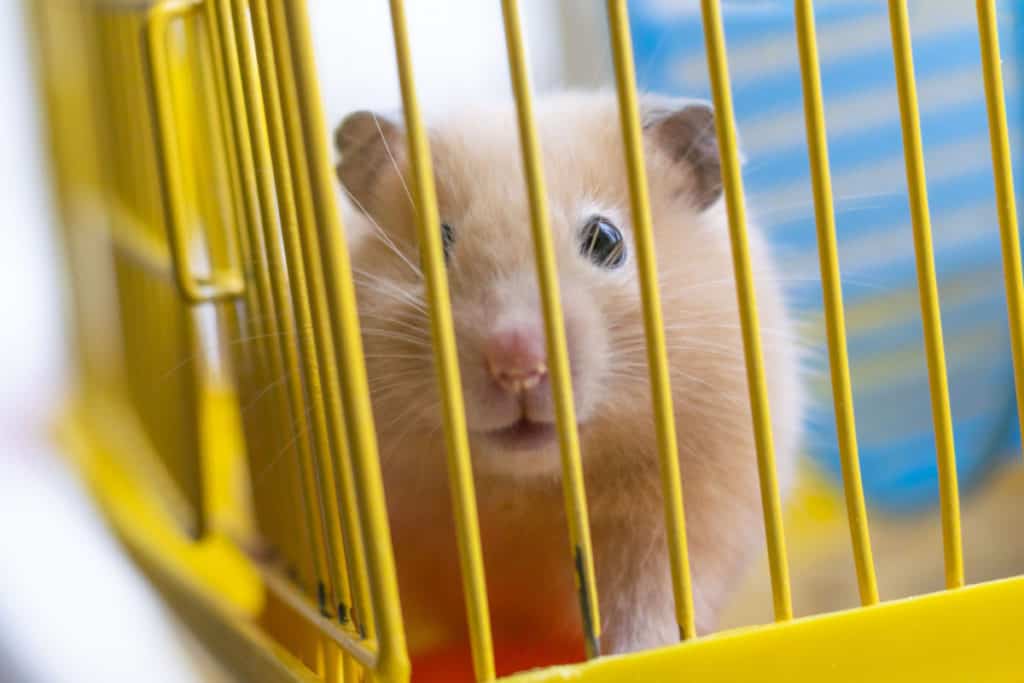
The bar spacing on hamster cages is often the same as every other pet cage. These are rectangular bars that have half an inch between them, which is good enough for all the categories of hamster sizes.
These bars allow your hamster to easily grab the cage walls if they want to climb obstacles inside their habitat. They will get excellent airflow without their cage getting overheated also. Because hamsters like to burrow, you might see excess Aspen shavings that will fall through the bars from time to time.
4. Several levels and platforms
You may have one separate level in your hamster cage, but since hamsters like to climb inside their cage to the top pretty often, you need to make sure that two-story platforms are completely separated.
Each level should be separated by an access hatch that is big enough for your hamster size, so there is no chance that your hamster could fall from higher sections of the cage if they climb to the top.
Accessories you can put inside your hamster cage
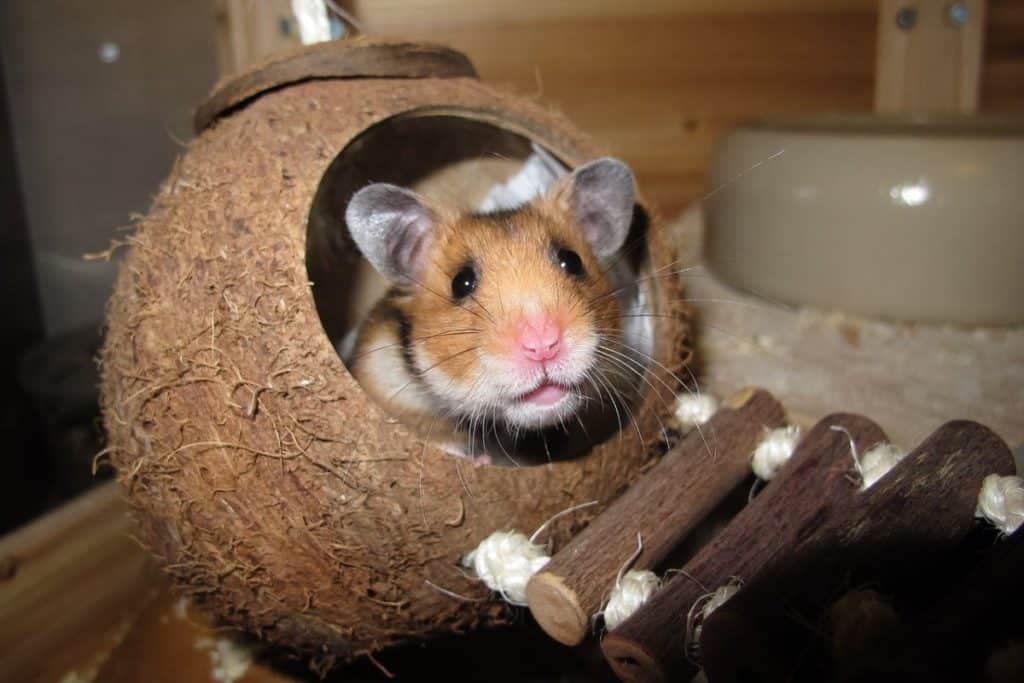
1. Hideouts
Hamsters like hiding so any kind of hidey house is going to be thrilling for them. You can buy premade huts and houses, but other items work just as well, like empty toilet paper rolls, cardboard product boxes, and anything they can crawl into.
Natural materials like a coconut shell with an entrance cut into it will be ideal additionally. You can even consider large ceramic structures that are used for fish tanks if they can crawl inside easily.
2. Food bowls
When it comes to feeding your hamster, a food bowl should not be made from plastic or acrylic. You need to have a heavy bowl that is made from ceramic or metal, as these don’t tip over so easily and are chew-proof too.
Food bowls that can attach to the cage wall take up less space and will become their favorite feeding spot. If you have more than one hamster, they will likely pouch their food and hide it for later.
3. Water dispenser
You will not want to have water dishes in a hamster cage since these can be tipped over or trampled through. Hamsters need a water bottle that allows them to get their daily water. This water needs to be changed every day so there is no bacteria build-up on the dispenser.
4. Bedding
Although bedding is not an accessory in itself, it should be included in the list of things you should put inside your cage as soon as you buy a hamster. They are natural burrowers and will need quite a lot of bedding for their burrowing instincts to be satisfied, so aim for at least 5-6 inches of bedding equally spread around the bottom of the cage. Your hamster might start creating galleries and nests in one or two corners.
What type of toys is a good choice for hamsters?
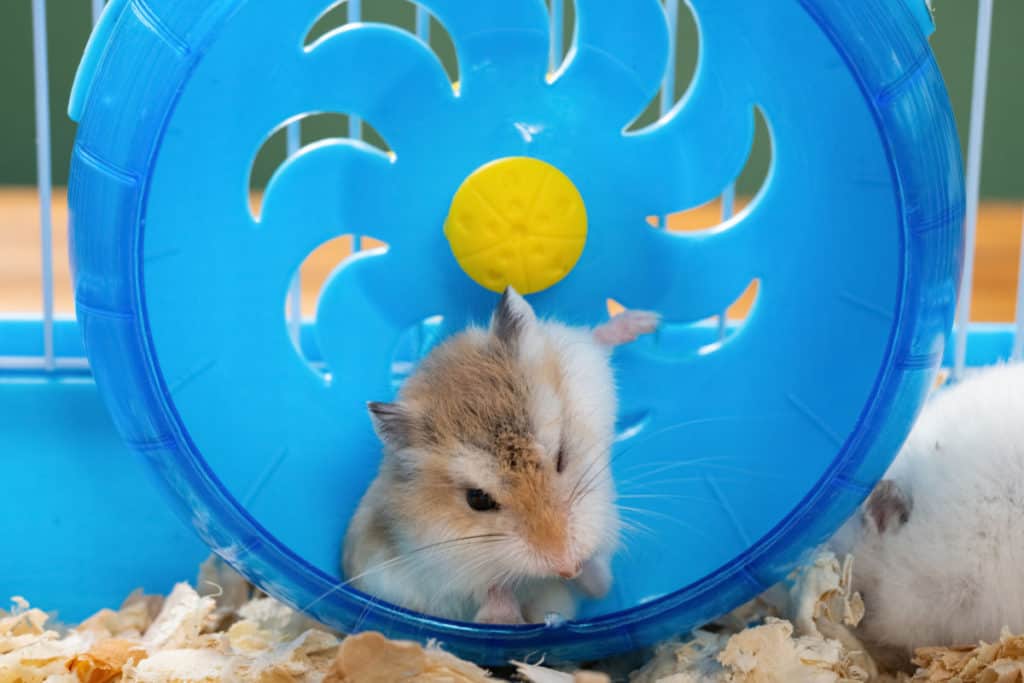
1. Exercise wheel
An exercise wheel should be placed at either end of the longest edge of the habitat. This allows your hamster to still run around in its cage and it does not clutter its surroundings. If you can find an exercise wheel made from metal, this is the best choice so they don’t chew on plastic wheels.
2. Tubes
Most hamsters love hiding and crawling in any tube-like structure that they can squeeze inside. Cardboard is the best material because you can toss it out when it gets too worn or chewed.
A word of caution though: Tubes can be dangerous to Syrian hamsters since they are bigger and can’t always pass through, so always make sure that the tube size is adequate (the bigger the better)
3. Exercise ball
One of the funniest things you’ll ever see is a hamster inside an exercise ball. They can freely run around wherever they want and get good exercise outside their cage. If the cage is too small, they can only use this toy outside their cage.
Make sure other pets are not around when they exercise in a room and always keep an eye on them since hamsters get easily frightened.
Where should I place the cage in the house?
If you keep your hamster cage in your bedroom, you will find they stay up all night. This will be irritating if you are a light sleeper, so it’s a good idea to put them in a somewhat quiet room. It does not need to be totally silent but noise is going to be stressful to any hamster if it’s too loud.
To care for your hamster the right way, always make sure these locations are free from other pets that could make your hamster nervous. Cats and dogs are going to be an alarm for them and they will make more noise because of them. So the room you put them in should be isolated and have a steady temperature that keeps them happy.
Temperature and humidity
The best temperature you should keep for them is between 65 to 75 degrees Fahrenheit all year round. Yet some hamsters such as the Winter Dwarf hamster thrive better in cooler rooms around 70 degrees.
When it comes to humidity you must have a range between 40 to 70% humidity to keep them healthy. Higher humidity will be bad for them and they could get ill.
DIY hamster cage setup
Creating the ideal habitat inside your hamster cage starts with nesting and boredom-prevention ideas. Interesting ideas about hamster cage setups can be found all around the internet on sites like Pinterest that give cool DIY tutorials. We recommend looking at Youtube for ideas from lots of hamster owners, with some making obstacle courses in their cages that hamsters love winding their way through.
How often do I need to clean my hamster cage?
Just once a week is good for cleaning your hamster cage, whether you keep just one or several in the same cage. It’s a good idea to put a puppy pee pad at the very bottom of the cage covered with a fleece blanket to absorb as much liquid as possible.
Should I cover my hamster cage?
You will cause more discomfort if your hamsters cannot see outside of their cage. They are not parrots or birds and don’t become quiet by covering their cage. If anything, it makes them more nervous and does not allow for proper airflow inside their cage. There is also the risk of them chewing on the fabric which might cause stomach blockage.
Can you put a hamster with other animals inside the cage?
The breed of your hamster dictates who goes with who inside a cage, except for the Syrian hamster breed which likes to live alone. Even if you see different kinds of hamsters together in a cage at the pet store, these are still too young to know any different. Yet once they reach adulthood, they will start to be territorial and will fight.
How often should I take my hamster out of its cage?
You should hold your hamster every day for about one hour so they keep that familiarity with you. They need to be handled so they have less of an urge to bite or nip at your skin. They will be happy to be handled as long as you take a certain amount of caution and care.
Resources and further reading:
- Behaviour of golden hamsters kept in four different cage sizes, Katerina Fischer
- Cage Size Affects Feeding and Energetics of Captive Rodents, Anthony C. Steyermark, and Pamela J. Mueller
Contents
- What Type Of Cage Should I Use For My Hamster?
- Accessories you can put inside your hamster cage
- What type of toys is a good choice for hamsters?
- Where should I place the cage in the house?
- DIY hamster cage setup
- How often do I need to clean my hamster cage?
- Should I cover my hamster cage?
- Can you put a hamster with other animals inside the cage?
- How often should I take my hamster out of its cage?

